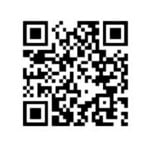As the world continues to evolve, so do the threats faced by high-net-worth individuals and the need for advanced personal security. In response to these growing security challenges, executive protection companies are leveraging innovative technologies to ensure the safety of their clients’ homes, assets, and families. One such advancement is the use of drones for estate security.
Drones are not just for surveillance at large events; they are now a powerful tool in estate protection technology, providing real-time monitoring and unparalleled coverage for sprawling estates. These unmanned aerial vehicles (UAVs) are transforming how estate security is approached, offering a proactive solution to identify potential threats before they escalate.
In this blog, we’ll explore how private security teams are using drones to enhance estate protection and why executive personal protection for high-net-worth individuals is increasingly relying on this technology.
How Drones Are Transforming Estate Protection
As part of an integrated estate security strategy, drones provide numerous advantages over traditional security measures. Unlike cameras and sensors, which are limited to stationary surveillance, drones can cover vast areas, perform real-time assessments, and offer immediate responses to security incidents.
Here’s a breakdown of how drones are enhancing estate security for high-net-worth clients::
- Real-Time Surveillance: Drones offer live, high-definition video feeds of the property, providing a bird’s-eye view that stationary cameras cannot match. This is especially beneficial for monitoring large estates, remote locations, or areas with limited access.
- Thermal Imaging and Night Vision: Many drones used for estate protection technology are equipped with advanced thermal imaging and night vision capabilities. This allows security teams to monitor the estate effectively, even in low-light or no-light conditions.
- Preemptive Threat Detection: Drones can detect suspicious activity or unauthorized access, enabling security teams to respond before a potential threat becomes an actual one. Drones help assess areas where intruders may have breached the perimeter, ensuring quicker action is taken.
- Autonomous Patrolling: Drones can autonomously patrol vast properties, offering continuous surveillance with minimal human intervention. These autonomous systems can be programmed to follow specific routes, ensuring every part of the estate is covered without the need for multiple guards or security personnel.
- Integration with Other Security Systems: Drones work in tandem with other estate protection technologies, such as alarm systems, security cameras, and access control barriers. They can be triggered by specific events or alarms, immediately dispatching to investigate and capture footage for real-time assessment.
How Are Private Security Teams Using Drones to Enhance Estate Protection?
Private security teams are increasingly using drones as part of their comprehensive executive protection strategy. Here’s how they’re integrating this technology into their estate security programs:
- Expanded Coverage for Large Estates
For high-net-worth individuals with large estates, traditional security systems often fall short in terms of coverage. Drones can patrol large areas quickly and efficiently, providing real-time surveillance of remote corners of the property that may otherwise be difficult to monitor with traditional security methods. This ensures that all entry points, including gates, driveways, and hidden areas, are consistently monitored. - Fast Response to Intrusions
If an intrusion is detected on the property, drones provide an immediate response. They can fly to the location of the incident, capturing real-time footage and assessing the situation before security personnel arrive on-site. This helps security teams better understand the nature of the threat, allowing for a more effective response and ensuring the safety of the estate and its inhabitants. - Monitoring Vulnerable Areas
Drones are particularly effective for monitoring vulnerable areas of an estate, such as the perimeter or places with poor visibility. Estate security often involves covering large, expansive properties, where stationary cameras or guards might miss key areas. Drones offer a proactive approach, flying over the estate to identify potential breaches in the security system, such as intruders scaling fences or approaching restricted areas. - Providing Real-Time Data to Security Consulting Teams
Drones offer valuable data for security consulting teams, who can use the footage captured by drones to perform detailed risk assessments and vulnerability evaluations. This real-time data enables them to create comprehensive security plans, making adjustments to strategies as necessary based on current security conditions. - Enhancing Emergency Preparedness
In case of an emergency, such as a fire or natural disaster, drones can play a vital role in emergency preparedness. By surveying the estate from the air, drones can locate affected areas and identify safe evacuation routes, aiding emergency response teams in real-time. This aerial view can be crucial in determining the extent of the damage or ensuring that everyone is accounted for during an evacuation.
Key Benefits of Using Drones for Estate Security
Drones for estate security offer several key advantages that set them apart from traditional security measures. These include:
- Cost Efficiency: Drones can provide extensive coverage with fewer personnel, reducing the cost associated with deploying security guards or installing an extensive network of stationary cameras.
- Enhanced Monitoring: Drones allow for more flexible, adaptive monitoring. Unlike traditional security methods, they can be repositioned on the fly to focus on different areas as needed, improving the ability to respond to emerging threats.
- Stealth and Discretion: Drones can monitor areas without drawing attention. This stealth mode is particularly beneficial when protecting high-net-worth individuals who value their privacy.
- Real-Time Alerts: Drones provide immediate feedback to security teams. If a threat is detected, the system can immediately send alerts, ensuring that no time is lost in responding to the incident.
How Drones Are Integrated Into Executive Protection Programs
Drones are not just a stand-alone solution but are often integrated into broader executive protection strategies. Here’s how drones fit into these programs:
- Personal Security: In addition to monitoring estates, drones can also accompany executive protection teams during high-profile events, offering aerial coverage and an early-warning system in case of a threat.
- Travel Security: For executives on the move, drones can be used to monitor transportation routes, identify potential security threats along the way, and offer real-time intelligence for security agents to act on.
- Data Analysis: The footage and data collected by drones can be analyzed to assess security threats, track suspicious behavior, and improve the overall security infrastructure.
The Future of Estate Security with Drones
As the demand for executive protection continues to grow, so does the need for innovative solutions that enhance estate security. Drones are playing an increasingly significant role in protecting high-net-worth individuals and their families by providing proactive, real-time surveillance that traditional methods cannot match. By integrating drones for estate security into their protection plans, executive protection companies can offer a level of security that combines cutting-edge technology with human expertise, ensuring the safety and peace of mind of their clients.
If you’re ready to elevate your personal security and protect your estate using the latest in estate protection technology, contact a professional security consulting firm today. The future of executive personal protection for high-net-worth individuals is here, and it’s airborne.














